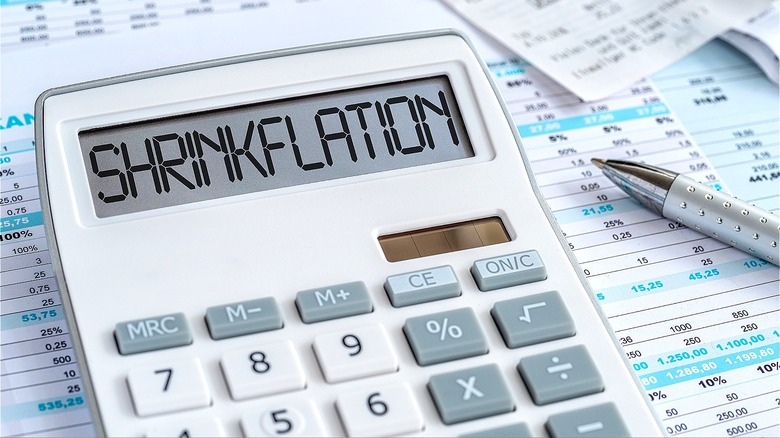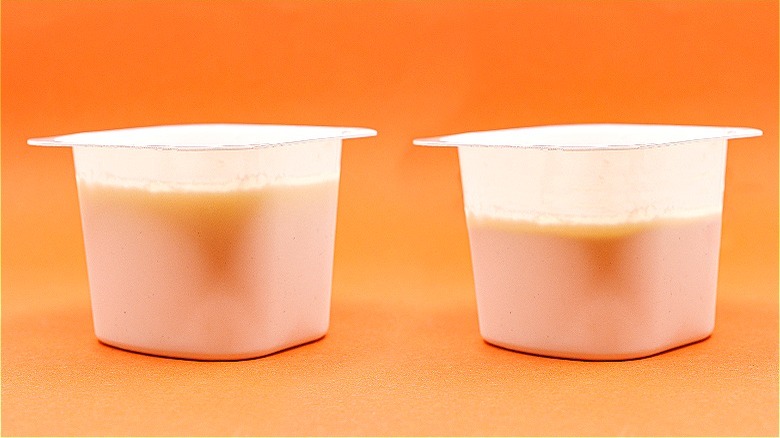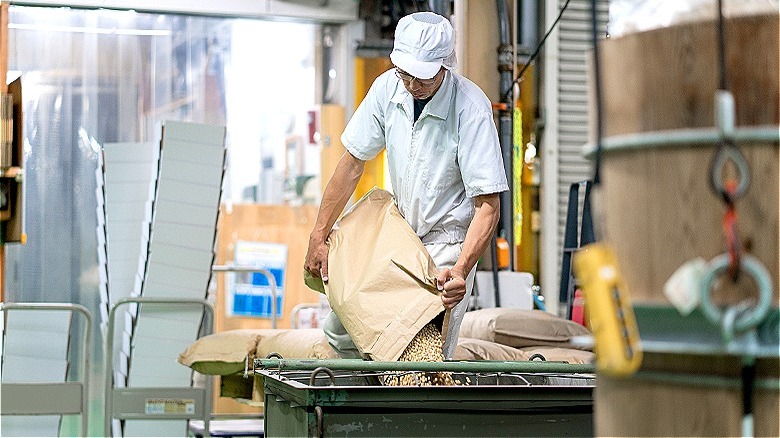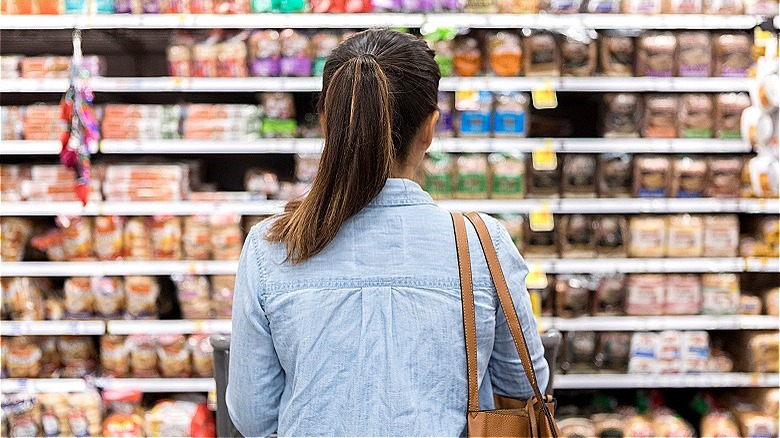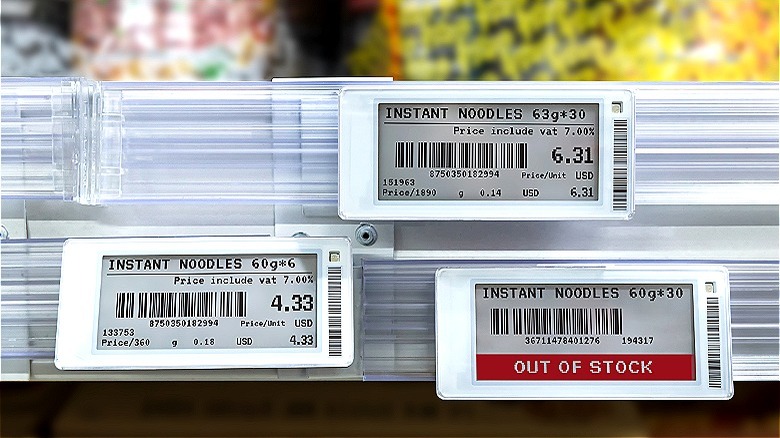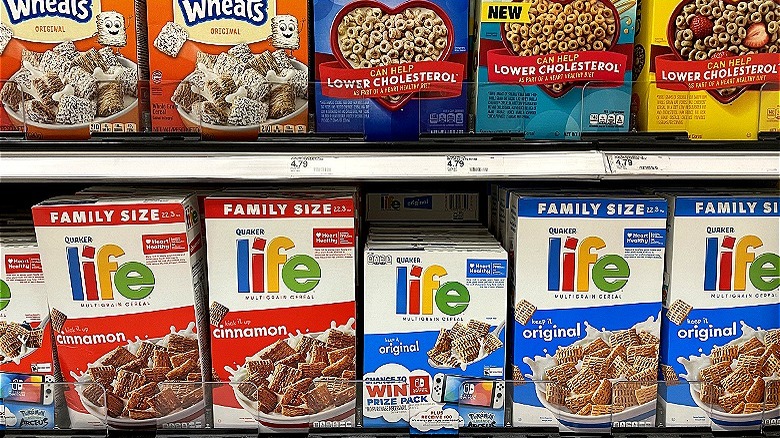Shrinkflation Fully Explained
The post-pandemic economy has left many Americans feeling financially strained. Between interest rates, housing, and inflation, many people can feel like they're barely holding on, and this feeling can be especially highlighted around the holidays. In fact, total credit card debt topped $1 trillion for the first time ever in 2023. While inflation can (and has) cost Americans more money than ever for the same goods, it has a lesser-known and more insidious relative you should know about: shrinkflation.
According to NPR, shrinkflation has been found in everything from tissue boxes to yogurt cups to coffee, and people are starting to notice. Shrinkflation is a tactic that companies use to reduce quantity in order to keep product prices the same. Consumers won't pay more, but they'll be getting less. Especially concerning is the potential that shrinkflation is just an excuse for profiteering.
Hitendra Chaturvedi, a professor of supply chain management at Arizona State University, explained to NPR that many of the companies using shrinkflation are also recording record-high profits. This means that, despite companies claiming cost pressures as the reason for shrinkflation, they might actually just be taking advantage of recent economic circumstances. Said Chaturvedi, " Are we using supply constraints as a weapon to make more money?"
Understanding shrinkflation, and how it can affect you as a consumer, is extremely important. This is especially true as more and more companies consider shrinkflation pricing tactics. Let's dive into what it is and how to spot it so you can shop smarter.
What is shrinkflation?
In simple terms, shrinkflation is paying the same for less. Oftentimes, this means consumers receive less quantity of a good, but it can also be more complicated if it effects only certain ingredients. For instance, sometimes consumers might end up with fewer ounces in a drink while other times, specific ingredients in a product are being skimped on (like the theory that Oreo is using less filling in its cookies).
Not only does the shrinkflation strategy ensure a company's profit margins remain intact, but it also serves as a way for companies to offset rising production costs like labor, ingredients, and/or distribution factors. Shrinkflation is also known as package downsizing, and it's important to realize that its effectiveness relies on the stealthy or even secretive way that it's deployed. While customers might eventually become aware of smaller quantities, it's a less obvious realization and one that generally comes only after they've purchased the product.
This makes the implicit price increase of shrinkflation more effective than the explicit tactic of raising prices, especially when you consider that research from the Journal of Retailing has found that heightened sensitivity to sticker shock can turn customers away from purchasing products. It's also important to realize that shrinkflation is often a side effect of inflation, but it's ultimately rooted in the hope that most customers won't actually notice the difference.
What causes shrinkflation?
Increased production costs, which are often a result of inflation, can push companies to use shrinkflation tactics to try and keep their profit margins. Production costs can cover a gamut of different elements that are all required to get your preferred box of cereal to the shelf at your favorite grocery store. Obviously, there are the raw materials and ingredients required for the product, but there are also the materials needed for packaging, as well as the manufacturing equipment required for packing and shipping. On top of all of this is the labor required to make sure all of these steps happen. When inflation raises the price of things like flour, cardboard, or even gasoline, it has a direct impact on how much it costs a company to produce your cereal.
Depending on a company's pricing power, it has the option to lose profits, raise prices, or resort to shrinkflation. Pricing power is the ability a company has to raise prices on their product without hurting demand for that product (since market competition is still important). This is generally reserved for unique products and brands that don't necessarily have affordable alternatives. A good example would be General Mills; its famous Cheerios have long been subject to high pricing power. However, 2023 sales drops due to lingering inflation have pushed the company to accept it has weaker pricing power than it enjoyed historically. With price increases no longer profitable, it's a fair guess the company will pursue some form of shrinkflation next.
What does shrinkflation mean for consumers?
When it comes to shrinkflation, how exactly a company decides to reduce the quantity of a given product can have wide variability but the key takeaway is that there will be less of a given product despite a similar price tag. This can have a big impact on consumers' grocery bills and budget goals. The same amount of ingredients a family of four needs for a week will now cost more since they'll have to purchase more quantities of shrinkflated products to ensure the same portions as before. Similarly, a couple that might rely on leftovers to fill in meal gaps might now find a lack of leftovers once they've spent the same amount of their food budget on what they thought were the same quantities of products.
Consumer awareness of shrinkflation is on the rise and, as more consumers become aware of these tactics, the backlash against companies that attempt it gets more serious. A June 2023 Ipsos Consumer Tracker survey found that 83% of people noticed that they were getting less but paying the same amount or more, and 79% said they felt cheated when it happened. Increasingly, consumers are turning to social media to share instances of shrinkflation and vocalize their disapproval. Public outcry can be beneficial in not only helping to reverse shrinkflation tactics but even making companies think twice before implementing shrinkflation in the first place.
Can anything be done about shrinkflation?
The only real power consumers have is with their dollar, so choosing to no longer purchase a product that has reduced its volume but not its price is a key way for consumers to signal their lack of approval for shrinkflation tactics to companies. Buying other brands and even store-brand items can help save money while financially hurting companies that use shrinkflation. Further, since the shrinkflation tactic primarily works as an under-the-radar approach, calling attention to products you've noticed have been shrinkflated can also help your fellow consumers by getting the word out. Only by shedding light on products and companies utilizing these tactics can consumers hope to undercut these pricing practices in the future.
Keeping a close eye on brand and packaging redesigns can be an important way to spot potential shrinkflation practices. Many brands will redesign the box or package that a product comes in as a way to mask or hide the lesser volume inside. Always check the package's listed quantity amount before purchasing and compare it with the usual amount you've purchased in the past. Another helpful way to keep track of potential shrinkflation is to look at the price per unit, which is often listed as part of the price tag (often along the bottom). If online shopping, retailers like Amazon will include a price per ounce or price per unit next to the current retail price, which can help you track if shrinkflation is affecting your favorite products.
Will shrinkflation ever reverse itself?
Unfortunately, once companies realize that consumers will purchase less for the same price, they'll more than likely be unwilling to go back. In fact, according to records from the United Kingdom government's Office for National Statistics (ONS), only 614 products increased in size between 2012 and 2017, compared to 2,529 products that decreased. While competition could force some brands to return to previous sizes, it's highly unlikely. Edgar Dworsky, a consumer advocate and former Massachusetts assistant attorney general, told NPR, "Upsizing is kind of rare."
A rather famous example of a brand actually having to reverse its shrinkflation tactics was Mondelez International, which owns Toblerone (among many other brands and products). In 2016, the company infamously reduced the size of Toblerone bars by 25% (it achieved this by adding more space between each piece, drawing comparisons to bike racks). This decision drew immediate and widespread outrage from consumers, which eventually forced the company to reverse the decision and return the bar to its previous size in 2018. However, the company clearly didn't learn its lesson, as it received similar criticism in early 2022 for shrinking its Cadbury Dairy Milk bar without lowering the price in the UK.
As noted, the only real way to help products return to pre-inflation sizes is through consumer feedback and competition. By purchasing different brands and calling out shrinkflation when you see it (either through social media or direct communications with brands), you can help your fellow consumers while also letting companies know you don't support underhanded pricing tactics.
